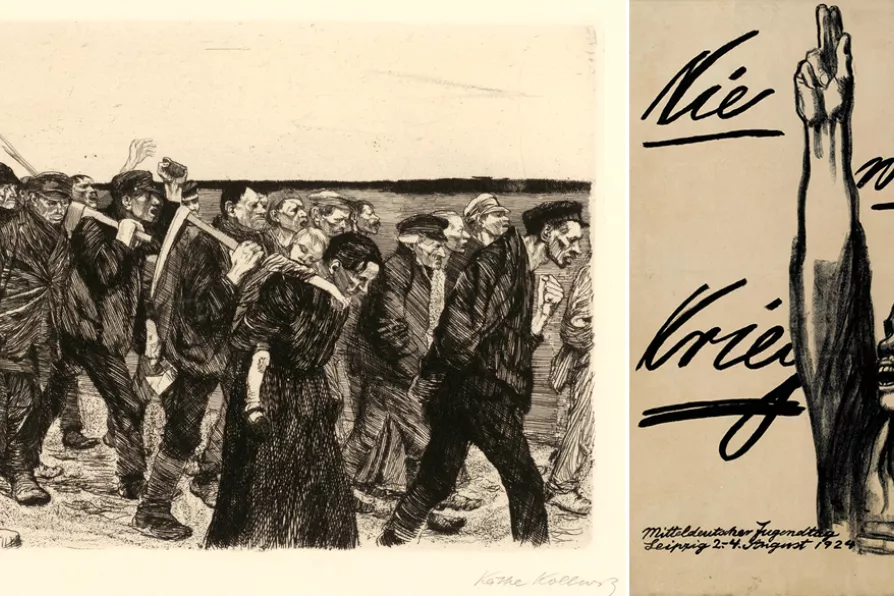The bard pays homage to his two muses: his wife and his football club
Kathe Kollwitz: a radical inspiration
CHRISTINE LINDEY pays tribute to one of the greatest printmakers of the 20th century, whose work opposing war and social injustice merits wider recognition

 March of the Weavers, 1893-1897; Socialist Working-Class Youth poster Never Again War for the 10th anniversary of Germany starting WWI, 1924
March of the Weavers, 1893-1897; Socialist Working-Class Youth poster Never Again War for the 10th anniversary of Germany starting WWI, 1924
GERMAN artist Kathe Kollwitz (1867-1945) was steeped in progressive politics and culture from childhood.
Her grandfather and father were socialists and her own lifelong conviction was reaffirmed through meeting the patients of her husband, Doctor Karl Kollwitz, in a working-class district of Berlin.
She managed to combine motherhood with a successful career as a teacher and artist without compromising her social and political beliefs.
Kollwitz had a traditional academic art education, in which oil paining topped the hierarchy of mediums, but she committed to printmaking because this better served her central aim of producing cheaply accessible works.
Similar stories

CHRISTINE LINDEY welcomes a film that focuses exclusively on women war artists, but deplores its omission of feminism, political context and Soviet anti-war art

From van Gogh to Sonia Boyce, from Hew Locke to Patrick Carpenter and... Pablo Picasso

JOHN GREEN debates the potential of a book that explores fascism in US history and its contemporary impact to reach the audience it deserves

CHRISTINE LINDEY welcomes a fascinating survey of the work of the communist and socialist artists who founded the AIA in the 1930s










